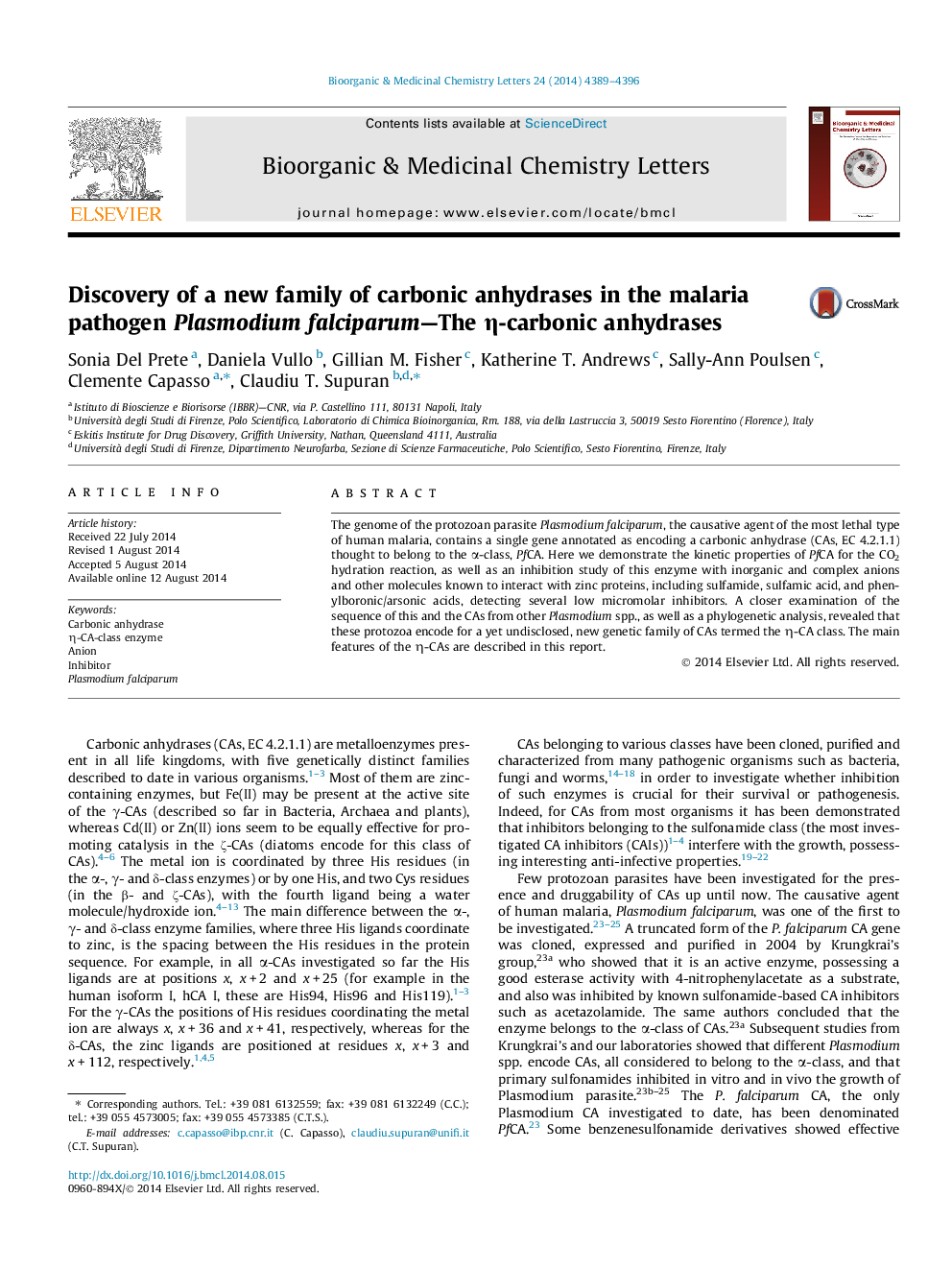| Article ID | Journal | Published Year | Pages | File Type |
|---|---|---|---|---|
| 1368835 | Bioorganic & Medicinal Chemistry Letters | 2014 | 8 Pages |
The genome of the protozoan parasite Plasmodium falciparum, the causative agent of the most lethal type of human malaria, contains a single gene annotated as encoding a carbonic anhydrase (CAs, EC 4.2.1.1) thought to belong to the α-class, PfCA. Here we demonstrate the kinetic properties of PfCA for the CO2 hydration reaction, as well as an inhibition study of this enzyme with inorganic and complex anions and other molecules known to interact with zinc proteins, including sulfamide, sulfamic acid, and phenylboronic/arsonic acids, detecting several low micromolar inhibitors. A closer examination of the sequence of this and the CAs from other Plasmodium spp., as well as a phylogenetic analysis, revealed that these protozoa encode for a yet undisclosed, new genetic family of CAs termed the η-CA class. The main features of the η-CAs are described in this report.
Graphical abstractFigure optionsDownload full-size imageDownload as PowerPoint slide
